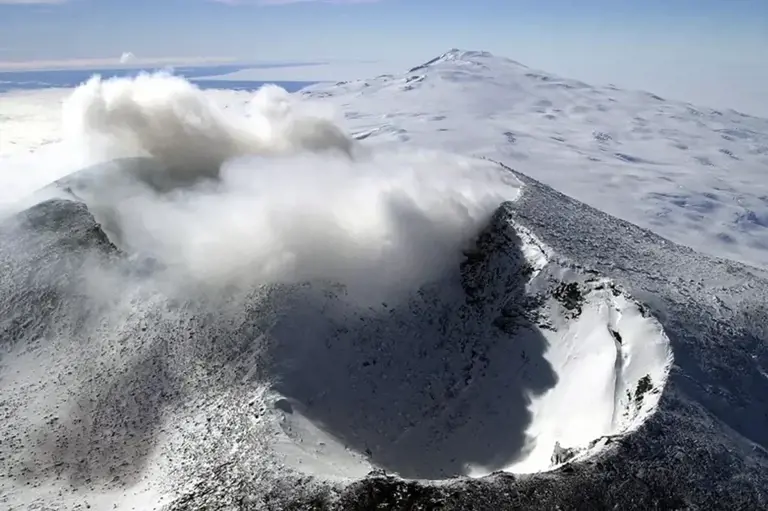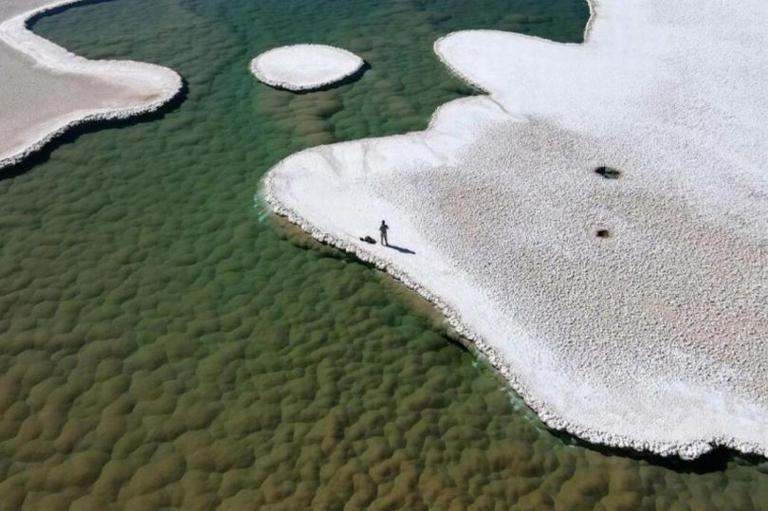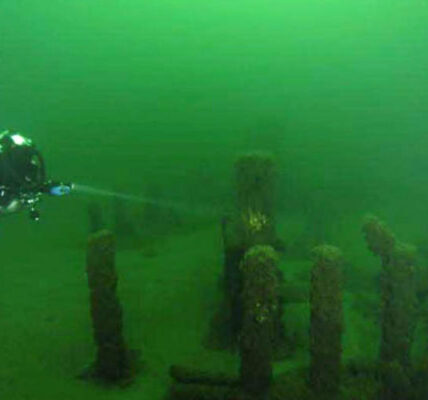- Homepage
- world affairs
- “Antarctic Gold Emissions: Discover the Surprising Treasure Trove Behind 138 Volcanoes!”
“Antarctic Gold Emissions: Discover the Surprising Treasure Trove Behind 138 Volcanoes!”
Table of Contents
ToggleAntarctic Gold Emissions
Dive into the world of Antarctic gold emissions and discover the surprising connection between volcanoes and precious metals in the icy continent. Learn about Mount Erebus, the tallest active volcano in Antarctica, and its daily production of gold-laden volcanic gas.

© Provided by Indy 100
Exploring the Antarctic Gold Rush
Antarctica, the frozen frontier, holds more than just ice and snow—it’s also a hotbed of volcanic activity. Hidden beneath the continent’s icy surface are 138 volcanoes, with 91 of them discovered as recently as 2017. Among these geological wonders lies Mount Erebus, standing tall as the tallest active volcano on the continent.
Mount Erebus: A Beacon of Activity
Mount Erebus is no ordinary volcano. Nestled in Antarctica, its summit reaches a staggering 12,448 feet (3,794 meters) into the sky, making it a towering presence on the icy landscape. What sets Mount Erebus apart is its continuous eruption activity, which has been ongoing since at least 1972.
The Golden Secret of Mount Erebus
While Mount Erebus may seem like just another volcanic giant, it holds a remarkable secret within its depths. Satellite images reveal a bubbling lava lake at its summit, spewing out plumes of gas and steam. But what makes these emissions truly extraordinary is their hidden treasure—tiny specks of gold, no larger than 20 micrometers.
The Daily Gold Harvest
Each day, Mount Erebus churns out approximately 80 grams (2.8 ounces) of gold-laden volcanic gas. This precious metal, valued at more than £4,800 ($6,000), adds a glittering touch to the otherwise stark landscape of Antarctica. Despite its minuscule size, the gold dust travels far and wide, with traces detected up to 1,000 kilometers (621 miles) from the volcano.
Unraveling Antarctic Volcanoes
While Mount Erebus may be the star of the show, it’s just one piece of the puzzle in Antarctica’s volcanic landscape. With 138 volcanoes scattered across the continent, researchers are faced with the daunting task of understanding their behavior and potential risks. However, studying Antarctic volcanoes comes with its own set of challenges, including harsh weather conditions and limited accessibility.

© Provided by Indy 100
The Mystery of Future Eruptions
The big question on everyone’s mind is: could Antarctic volcanoes erupt again? While most are considered dormant or extinct, the possibility of future eruptions remains a topic of debate among scientists. Past volcanic activity, such as that of Mount Takahe, has been linked to significant environmental impacts, including changes in climate and the ozone layer.
Preparing for the Unknown
Despite the uncertainty surrounding Antarctic volcanoes, researchers continue to monitor their activity closely. With advancements in technology and scientific research, they hope to gain a better understanding of these geological wonders and their potential risks. While the chances of another gold-laden eruption may be slim, the importance of studying Antarctic volcanoes cannot be overstated.
Conclusion: The Icy Frontier
Antarctica may be known for its icy expanse, but beneath its frozen surface lies a world of geological wonders waiting to be discovered. From towering volcanoes to gold-laden emissions, the continent offers a glimpse into the dynamic forces shaping our planet. As scientists continue to unravel the mysteries of Antarctic volcanoes, they pave the way for a better understanding of Earth’s complex natural systems.
ALSO READ:



